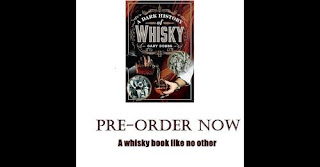And now back into the time capsule and over to Terry:
Writing Westerns by Terry Harknett part two
Why this success with Edge? And why have not Adam
 Steele, Jubal Cade and Apache (three more westerns series I created?) achieved the same bestseller status?
Steele, Jubal Cade and Apache (three more westerns series I created?) achieved the same bestseller status?Because Edge was an original. He had to be, since as I've said, I had never read a western in my life before I wrote the first two Edge books. The sole influence I had was the movies and TV series - preconceptions from another medium unlike all those unsuccessful mysteries I had written previously (and which I continued to write for some time after Edge was a success). They had been very strongly influenced by my ceaseless reading of Raymond Chandler, Ross Macdonald, Mickey Spillane, and all the other American hard-boiled school of writers that I tried to emulate. And then when I wrote my other western series I was subconsciously influenced by myself. Certainly I had the good fortune to be in the right plac
 e at the right time and to know the right people. That was part of having the forty nine% luck. After that I sat down and perspired my forty nine% working in a field that initially had no appeal to me, and set aside what I wanted to write in order to give the public what they wanted to read - or, in the first instance, what a publisher thought the public wanted to read.
e at the right time and to know the right people. That was part of having the forty nine% luck. After that I sat down and perspired my forty nine% working in a field that initially had no appeal to me, and set aside what I wanted to write in order to give the public what they wanted to read - or, in the first instance, what a publisher thought the public wanted to read.I became a commercial writer, writing for money and, as it turned out, for more pleasure than I ever got from writing those unsuccessful mysteries. For I can ensure you sitting down at a typewriter with a virtually pre-sold project in mind is much more fin than working in limbo with only a hope and a prayer for company.
Now to the mechanics of how I, as a commercial writer, produce my books (a technique that is much the same as when I wrote those first two Edge books).
I start out with an outline of the projected story - a chapter by chapter breakdown, which may be as few as three or as many as eight pages long. (Nowadays I write eight such breakdowns each spring - four each for Edge and Steele, the two series I presently do. And the publisher gives me contracts for these eight books. Thus, my year's writing and publishing schedule is set). I then write the books at a rate of at least 15 pages a day, or about 3,000 words, come hell or high water, five days a week. And in three weeks I have a finished manuscript of from 225 to 260 pages.
At the end of the working day I read through the work I have done, and then at the end of the book I read the entire typescript. On books that do well, I need only to correct typing and spelling errors. On the books that go less easily, I may have to rewrite ten or a dozen pages before I am finished.
NEXT IN PART THREE - TERRY TALKS ABOUT RESEARCH AND THAT PERSPIRATION FACTOR.





2 comments:
Interesting the way he developed an enthusiasm for something he initially had no interest in. I don't think it's possible to write with enthusiasm for very long (even if the work is pre-sold) if what you're writing doesn't connect with you personally. There was something else at work.
Ron - it kind of makes sense that Terry's initial ignorance of the genre may be the reason that his books were so fresh. I mean I like his Adam Steele series too but not to the extent of Edge. In fact I've only ever read five or six of the Steele books. Keep reading for the final part in which Terry gets all practical with the nuts and bolts of his writing.
Post a Comment